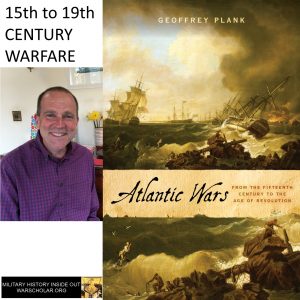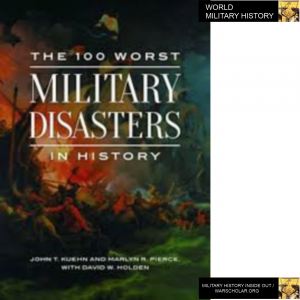Podcast: Play in new window | Download
Subscribe: RSS
 Geoffrey Plank interview about his 15th to 19th centuries military history book “Atlantic Wars”
Geoffrey Plank interview about his 15th to 19th centuries military history book “Atlantic Wars”
Check out this book here https://amzn.to/3j22eMb
Interview Summary
Geoffrey Plank has been a historian for many years focusing on Nova Scotia, Quakers, and now military history. He’s written an expansive review of warfare across the Atlantic from the 15th to 19th centuries. We talked about this period, the book, and the immense impact the slave trade had on the formation of the nations along the Atlantic seaboard and on warfare.
(THE AUDIO PLAYER IS AT THE BOTTOM OF THE POST.)
0:40 – Geoffrey explains how he ended up writing an expansive book on Atlantic Wars.
2:02 – Geoffrey explains how he organized the book since it covers so much time and countries.
3:16 – Geoffrey talks about warfare at sea.
5:24 – Geoffrey addresses the idea of democracy and piracy.
7:14 – Geoffrey explains why he started the book in the 15th century.
8:53 – Geoffrey explains why he ended the book at the Age of Revolution.
11:37 – Geoffrey addresses the North Africans raiding Europe.
13:17 – Geoffrey talks about the shift to larger sailing vessels.
16:18 – Geoffrey talks about indigenous populations involvement in the Atlantic war at sea.
18:32 – Geoffrey talks about the war on land around the Atlantic basin and the involvement of indigenous populations.
21:27 – Geoffrey talks about the West African coast.
23:11 – Geoffrey talks about military forces in West Africa.
24:11 – Geoffrey talks about the North and South Atlantic.
26:09 – Geoffrey talks about the development of racism in this period.
30:24 – Geoffrey talks about how often whole colonies were evacuated from the New World to the Old. He also addresses the connection between the slave trade and military operations.
34:40 – Geoffrey talks about the meeting between African slaves and indigenous Americans.
36:38 – Geoffrey talks about a millenarian religious movement.
38:40 – Geoffrey talks about how he did his research.
43:09 – Geoffrey talks about including all of North America within the Atlantic World.
45:20 – Geoffrey talks about the importance of military history in the Atlantic World.
47:46 – Geoffrey talks about galleys being used to block forts in the Caribbean.
50:17 – Geoffrey talks about how rough the lives of sailors were in this period.
54:40 – Geoffrey talks about the role of Central and Eastern Europe in the Atlantic World.
Links of interest
https://global.oup.com/academic/product/atlantic-wars-9780190860455?cc=us&lang=en&
Contact Information
For more “Military History Inside Out” please follow me at www.warscholar.org, on Facebook at warscholar, on twitter at Warscholar, on youtube at warscholar and on Instagram @crisalvarezwarscholar. Or subscribe to the podcast on Apple Podcasts | Google Podcasts | Stitcher | Spotify Please see historyrabbithole.com for a list of my dozen or so blogs and podcasts. You’re sure to find something you like.
Guests: Geoffrey Plank
Host: Cris Alvarez
Tags: Books, audio interviews, author, academic, podcast, Oxford University Press, age of sail, American history, General military history, 19th century war, 18th century war, Renaissance warfare, Naval Warfare, Slavery history, native american, indigenous peoples,
Check out this book here https://amzn.to/3j22eMb
As an Amazon Associate I earn from qualifying purchases.


